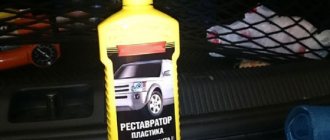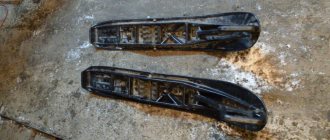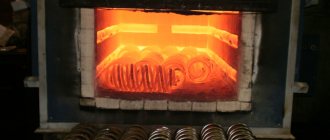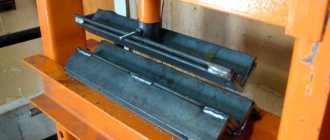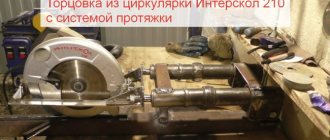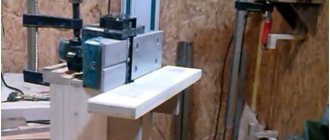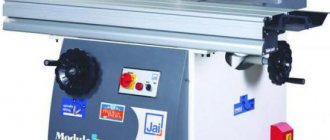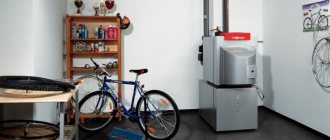Plastic is a universal material. It has found wide application in the manufacture of various components and parts in both industrial and household appliances. Products made from it are used in interior design of residential premises and offices.
A type of material called liquid plastic allows you to create crafts of a wide variety of shapes and sizes. This makes it possible to implement original design solutions. How to make liquid plastic at home?
Materials for production
To make liquid plastic with your own hands, you need to prepare the following:
- container made of glass or metal;
- acetone;
- Styrofoam.
In this case, the amount of acetone used depends on the desired volume of the finished product.
If you want to make liquid plastic with your own hands, the recipe for its preparation will be based on dissolving polystyrene foam in acetone. For this, polystyrene foam is used. It is a packaging container for various household and electronic equipment.
Plastic injection machine at home
Below is a video explaining how to make a plastic injection molding machine. What do you need for this in a DIY home environment? Rod with piston. Three-quarter pipe as a cylinder. Half inch adapter to 3/4 pipe. Fitting cut off for convenience. Metal gasket with mica for insulation. Thermostat. It regulates temperature up to 350 degrees. 600 watt ten. Two nuts and a box for attaching the thermostat. We put on the adapter. We tighten the washer. To prevent the nichrome from sliding down.
We begin to assemble the control unit. Then we attach the thermocouple from the thermostat to the cylinder body. The author did not show how he would assemble all this, but presented a diagram. The photo shows the device assembled.
We attach the control unit to the syringe. Tighten with nuts. The thermocouple is long enough. Now you need to secure it. Mica to prevent thermocouple from slipping through ceramic insulators. For rewinding, not just a thread is used, but a silica one. It is heat-resistant, that is, it does not burn or melt. You can use asbestos cord. But since the master did not have it in stock, he had to buy silica.
We wrap it with heating element. Next, you can use mineral wool or asbestos fabric. Necessary to avoid heat loss. The master used mineral wool from an old oven. Fixed it with aluminum wire. Assembly is complete. Pressure tests can be carried out.
Set the thermostat to 100 degrees. Let's see how the machine will work in this mode at home.
How to make liquid plastic with your own hands
The step-by-step recipe for preparing the named material looks like this:
- Open the container with acetone and pour the liquid into the glass container so that its level from the bottom is approximately 1 cm.
- Polystyrene foam must be broken into many small pieces, each of which will be easily placed under the thickness of the solvent.
- You can make liquid plastic with your own hands by dropping each piece into a container and waiting for it to completely dissolve.
- Polystyrene foam should be added to the container until it stops melting. Then you need to wait 5-10 minutes for the unused acetone to evaporate.
- After this, a viscous mass is formed at the bottom of the container, which can be used to produce a variety of products.
Knowing how to make liquid plastic, remember that complete hardening of the mass lasts 20-30 hours. Consequently, the part being manufactured cannot be removed from the mold within this period of time.
The substance should be applied with a small rubber spatula. Movements should be smooth. Liquid plastic must be stretched over the surface to be treated. If you use it to fill cracks, it is better to use brushes with hard bristles. They need to “push” the mixture into the gaps. After the plastic has hardened, it is recommended to apply another layer of the substance.
The described product has long been sold in finished form. It only needs to be heated in a water bath or in special equipment. A hair dryer is also often used for this.
As a rule, liquid plastic is produced in dense packaging. Its terms and storage conditions are strict. The temperature in the room where it is located should not fall below 15 degrees. Otherwise, the product will lose its performance characteristics:
- viscosity;
- elasticity;
- hardness after hardening;
- practicality;
- durability.
The cost of liquid plastic is quite high. That's why it's better to do it yourself.
Making the body of the box
First you need to make the body of the drawer. Of course, you can take something ready-made, for example, from old furniture. But certain dimensions were required for the production of masks and parts for cars, which had to be made from scratch.
I used old boards. I found literally rubbish and garbage lying around the garden, along the street, which was lying around and no one needed. I had to cut, remove all unnecessary parts, protruding ends, and irregularities so that the boards were even and the same height and width. I made the size according to the face, took a cast from cement and made a box based on it. This is needed to make masks. Therefore, I focused on the largest sizes that may be required. I cut everything out with a circular saw, a jigsaw is acceptable, but working with a saw is much more convenient and faster. The result is a frame. A groove had to be made along the top of each board to accommodate the grille. Grate for conducting air into the box. Connect a vacuum cleaner to the box itself, and create a vacuum or, more simply put, a vacuum inside the box, and attract plastic. I made cuts along the edges of each board at the ends, coated them with glue using a glue gun, and stuck all the parts together. The result is a box. Then I secured all the corners with self-tapping screws. After fastening it turned out to be strong, the screws and glue simply hold it tightly. You need to do the bottom.
I found chipboard from furniture. Let's draw the bottom. Let's cut off the excess. Chipboard is difficult to saw because it is a dense material. The box for melting and shaping plastic is ready.
Precautionary measures
Acetone is a very dangerous liquid that has an extremely negative effect on the human body. Therefore, it is allowed to make liquid plastic with your own hands only if the following precautions are strictly observed:
- Before working with acetone, you must carefully study the instructions for its use. It is indicated on the container label.
- Special sealed safety glasses should be used. They will protect your eyes in case of liquid drops and vapors. Working without them can cause serious eye injury.
- Acetone is toxic, so it should only be used in a well-ventilated area. In this case, it is necessary to use respiratory protection.
- This is a highly flammable product. Therefore, liquid plastic is made with your own hands away from sources of open fire. Smoking is strictly prohibited when performing work.
- Residues of acetone must not be poured into the sewer system.
- At the end of the process, as well as after pouring the finished plastic into molds, you must thoroughly wash your hands.
How to use ready-made material
Homemade plastic adheres well to metal surfaces, so it can be used to cover the handles of steel tools. After hardening, holding them will be much more convenient and comfortable.
To apply the plastic “paint” you will need a small brush. The composition is applied to the surface of the handles in a thick layer, and then allowed to dry completely in fresh air until the xylene evaporates. The finished coating will be monolithic and very durable.
Applying the composition to tool handles
Important! When working, it is necessary to observe safety measures, work in an open space and use a protective mask, because solvent vapors are harmful to humans.
The following must be done:
- wear special safety glasses that will prevent eye burns in case of accidental contact with the material;
- Avoid being near sources of open fire and heating devices (xylene is a highly flammable liquid), and do not smoke under any circumstances;
- Do not pour any remaining plastic or solvent down the drain;
- work only with gloves.
Applications of liquid plastic in finishing
The product has been used for finishing for a long time. After its application, an elastic film appears on the treated surface. It is highly waterproof and UV resistant. The material protected by such a film is not afraid of exposure to aggressive detergents. The smooth surface has a pleasant shine and retains its characteristics for many years.
Material characteristics
After applying this product, the object acquires all the characteristics of a metal - its color, texture, magnetic properties and thermal conductivity.
Available liquid metal options:
- bronze and brass,
- copper,
- gold and silver.
Designers use this material in many of their projects; in order to decorate the outside of a building, liquid metal requires the application of an anti-corrosion agent.
Using liquid metal
We have already told you what thermal paste is needed for. ZhM is used for the same purposes, but has its pros and cons compared to thermal paste, which we will look at a little later in this article.
Important! Never use liquid metal on aluminum surfaces . They react, resulting in aluminum corrosion.
This is what happens to aluminum during prolonged contact with liquid metal
Before using the LM, you need to degrease the working surfaces - the processor cover and the radiator. The best solution for this is acetone or solvent 646. As a last resort, use alcohol, but alcohol will not be able to remove all the remnants of the previous thermal paste if it contained silicone oils. But alcohol will do an excellent job of removing liquid metal residues.
If you do not degrease the working surfaces, it will be very difficult to apply liquid metal. In addition, its effectiveness will noticeably decrease.
The process of applying liquid metal to the processor
Now apply a small drop of JM in the center of the processor and spread it evenly over all planes of the processor with a cotton applicator. You can smear it with your finger, but first wear a rubber glove (WITHOUT TALC) to prevent new greasy stains from appearing on the processor. The layer of liquid metal should be approximately 0.003-0.005 mm thick . You need to lubricate both the processor and the cooler radiator (I repeat once again, the radiator is NOT ALUMINUM).
When you screw on the cooler, try NOT to move it around the processor.
If you use your computer or laptop in normal mode, then it is better to use regular thermal paste. Read the article to find out which thermal paste is better. As for liquid metal, let's leave it to the guys who are into overclocking (read more about what overclocking is).
Properties and Application
The raw material becomes suitable for use after combining two components - the finished base and the hardener. The thick mass can be applied to any smooth, curved or embossed surface without any problems. After hardening, it acquires the properties of cast products. The material shines beautifully, has an original metallic texture and color. The coating is available in the following options:
- brass;
- gold;
- silver;
- bronze;
- copper, etc.
Decorative liquid metal Metoplax 2k brass
The building material has the following properties:
- does not deteriorate due to temperature changes;
- withstands heating up to +120 degrees;
- not afraid of high humidity;
- resistant to weather conditions and precipitation;
- used in exterior and interior decoration;
- has magnetic properties;
- has no joints or seams;
- capable of conveying the most complex surface texture;
- not affected by bacteria, mold, fungi.
With age, metal only becomes more interesting in appearance. It oxidizes, after which a patina and original patterns appear on the surface. If oxidation needs to be avoided, the material is covered with a special protective layer on top to prevent it from interacting with oxygen. Without proper care, metal can even rust. Corrosion can also be prevented by protecting the finish with varnishes.
Lacquered decorative coating for metal look
The disadvantages of the product include its high price (from 8,000 per kilogram). In addition, when dried, it releases toxic substances and can only be used if certain safety precautions are observed. After hardening, the finish will be harmless to health.
Liquid metal in the interior
“Advanced” designers actively use new products when arranging interiors. She can make any object completely metal or decorate its individual parts. The material can be used to decorate walls, furniture, ceilings, stucco, chandeliers, railings. It is used for sheet cladding with and without perforation, and is subjected to brushing and burning. Liquid metal is used to fill pores in other materials, such as glass and wood. Multilayer coatings that use one type of material or masses of different colors look very beautiful.
Furniture coated with Liquid metal
Using this innovative product, any product can be aged or, on the contrary, given a modern look. Due to its moisture resistance, it is well suited for finishing spa areas, baths, bathrooms, and kitchens. Wear resistance makes the material suitable for decorating stairs, halls, offices, and shopping centers.
Pros and cons of liquid metal for the processor
Of course, liquid metal serves as a thermal interface between the processor and the cooler better than any thermal paste, but, like everything in this world, liquid metal has its pros and cons. Nothing is perfect. Here is a list of advantages and disadvantages:
Advantages (pros) of using liquid metal:
- The thermal conductivity of LM is approximately 8-9 times higher than that of thermal paste;
- Operating temperature range from -273 C to +1200 C ;
- In addition to excellent thermal conductivity, liquid metal is capable of conducting electricity ;
- Non-toxic.
Disadvantages (cons) of using liquid metal:
- Applying liquid metal is more difficult than conventional thermal paste. Surfaces must be cleaned and degreased. Although there are some thermal pastes that are too flexible, which are also not so easy to apply.
- Inability to use with most budget aluminum coolers.
- Due to its electrical conductivity, liquid metal should not be allowed to come into contact with the motherboard. A short circuit may occur .
- It is quite difficult to clean the surface from liquid metal . But if you are changing the ZhM to the ZhM, then it is not necessary to clean it completely. But if, after using liquid metal, you still decide to return to thermal paste, then get ready for the difficulties of cleaning surfaces from liquid metal.
- Price . The price is quite high. Get ready to shell out some cash.
